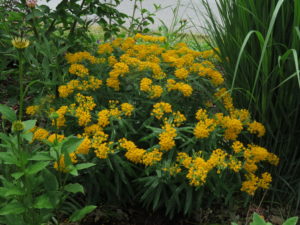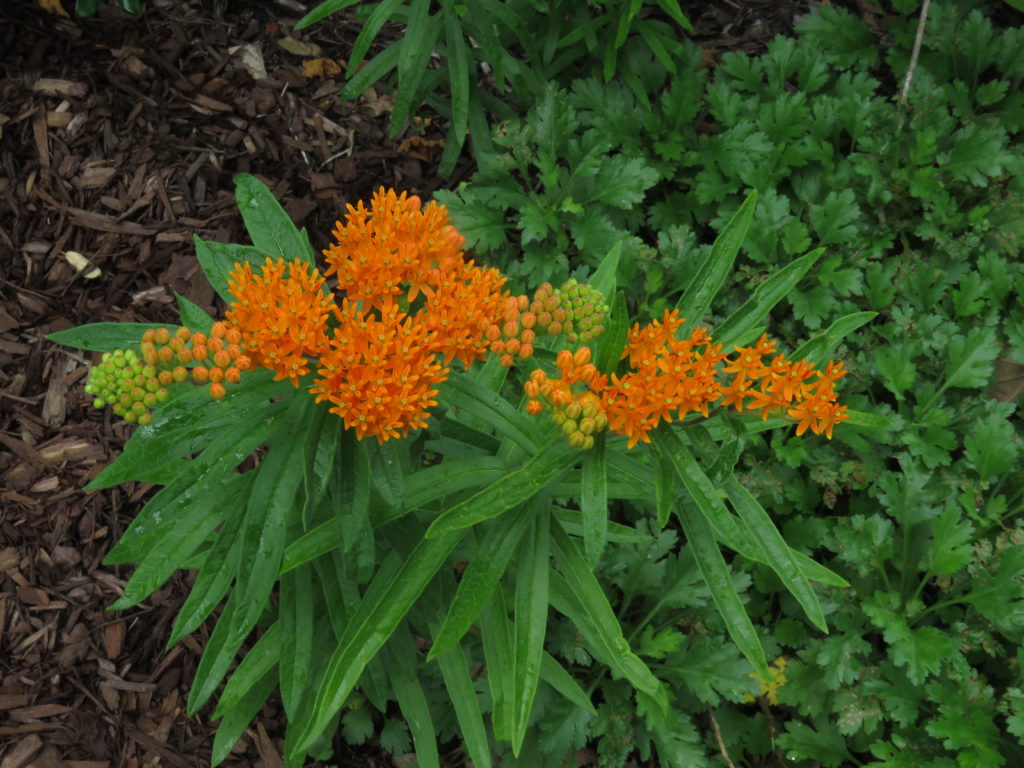
Butterfly weed (Asclepias tuberosa), aka milkweed, is a long-lived summer blooming perennial. In the wild milkweed may be found growing in dry/rocky open woodlands, prairies, farm fields, and along roadsides in the southeastern U.S and mid-western U.S. and Canada (USDA hardiness zones 3 -9).
Established plants typically grow as a clump to 2- 3 feet high and 1 -2 feet wide. Butterfly weed serves as an important host and nectar plant for many kinds of butterflies, including monarch butterflies and other beneficial pollinators. Their thick green leaves serve as a food source for the butterfly pupa (chrysalis).
Unlike many of the other milkweeds, the sap is not milky. For almost six weeks, from late spring into summer, clusters of vibrant orange to yellow-orange flowers (umbels) cover the plant canopy. The narrow, lance-shaped leaves are attached to hairy stems.

Butterfly weed self-sows freely in the landscape, but the plant is not considered invasive. Prominent 3 – 6 inch long spindle-shaped seed pods break open when ripe and release multitudes of silky-tailed seeds which are dispersed a long way by wind. Seed pods may be utilized in dried flower arrangements.
Butterfly weed is a perfect choice in sunny meadow or prairie gardens. It grows in average, dry to medium, well-drained soils. It is highly drought tolerant and manages in poor, dry soils. Established plants emerge rapidly in mid-spring and grow rapidly.
Butterfly weed is easily started from seed, but may take a year or two before first flowering. Digging up wild plants usually winds up failing because of their deep taproot system. Young seedlings are best left undisturbed for two years to become established.
Few disease and insect problems trouble butterfly weed when grown on the right site. Wet poorly-drained soil will invite root rot disease and plant death. Rust and leaf spot diseases are signs of an overcrowded planting. Plants are also deer proof.
Their bright orange flower clusters are among our showiest native wildflowers and look nice in floral arrangements. ‘Hello Yellow’ is a yellow flowering cultivar. Make a nice cut flower for your home.

 Posted in
Posted in 
